In 2012, I realized I had a problem. My iPhone made me twitchy. It called to me from my pocket, the way the Ring called Bilbo Baggins.
My moment of clarity happened in my living room. I was sitting on the floor one evening, building train tracks with my kids, when my older son said:
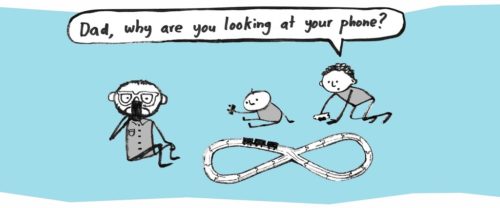
He wasn’t trying to make me feel bad or anything. He was just curious. But I didn’t have a good answer. So why was I looking at my iPhone?
I didn’t even remember taking it out — it had sort of materialized in my hand. All day, I’d been looking forward to spending time with my kids, and now that it was finally happening, I wasn’t really there at all.
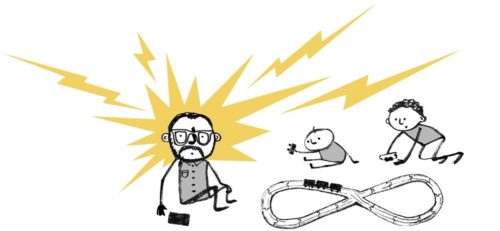
I froze for a second. I thought back.
When the iPhone came out, in 2007, it was shiny and beautiful and cool and I flat-out wanted one. But I needed a justification, so I convinced myself that I needed it for work. After all, the iPhone had email, a web browser, and even a stocks app — this was a serious tool for serious people!
So I got an iPhone, and just like that, I signed myself up to check and respond to email wherever, whenever. No pay raise, no new job title, not even a request from my boss.
For me, this was a 100% self-inflicted responsibility because I wanted a shiny object.
Over the years, as new apps came out — Facebook, Instagram, news, games, etc — I installed them. They were shiny, they were free, and they helped me “get my money’s worth” out of my phone.
Every app created new responsibilities. More inboxes to check and more feeds to read. Every app latched onto my brain, tethering my phone to my skull with invisible string.
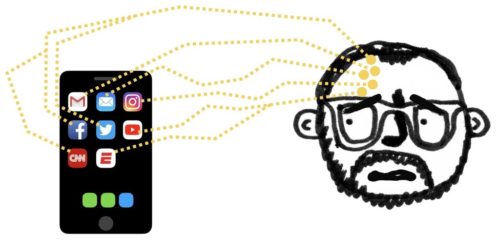
It was all self-inflicted. I was just giving my attention away. If I found it difficult to pay attention to what should have been the highlight of my day, playing with my kids… I had only myself to blame.
Why exactly did I have an iPhone, anyway?
I’d never thought about that question before, but the answer was simple: I wanted the iPhone to make my life better. I wanted a futuristic tool and I wanted to be in control of it.
I was angry with myself. I was angry at the phone. I’d felt guilty about it before—but this time I decided to stop feeling guilty and actually do something about it.
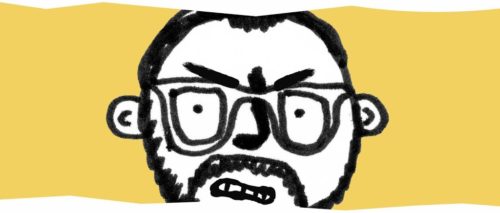
With my pulse pounding in my temples, I mashed the screen till the icons wiggled. Then I started deleting those goddamned apps.
I began with the obvious attention thieves. I deleted Twitter, Instagram, and Facebook. I deleted YouTube, ESPN, and all my games.
Then I went into the settings and removed Safari. I was like David Bowman in 2001, shutting down the psychotic computer HAL so I could fly the spaceship by myself.
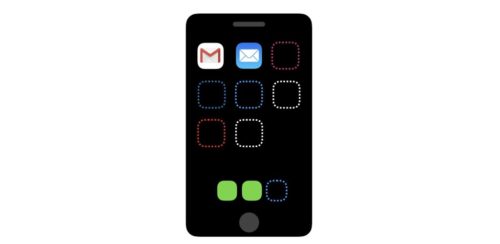
The only thing left was email.
I love email. I’ve loved it ever since I sent my first message back in the early 1990s. I’d even worked on the Gmail team at Google.
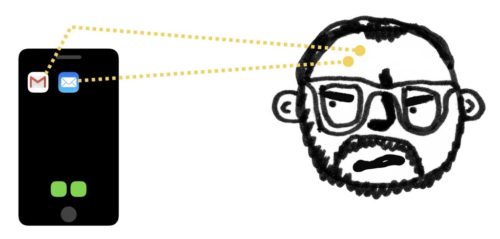
And yet… I had to admit that email was the very worst distraction on my phone. Hiding behind a guise of necessity, email was an infinite hamster wheel powered by other people’s priorities.
So I gritted my teeth and deleted Gmail. I even went into settings and deleted my Google account to disable Apple’s Mail app.

That was it. Just sixty seconds after I’d begun, HAL was offline and I was on my own.
Revenge was sweet, but after the thrill of destruction, I felt nervous. My iPhone was a shell of its former self.
Without my apps, I expected to feel anxiety and isolation. So I told myself it was just an experiment. I would try it for a week — after that, I could always re-install my apps.
The first few days were strange. I’d unlock my phone, only to remember there was nothing to check. Before, getting up-to-date on my apps provided a small sense of accomplishment. Unlock the phone, tap, boom! It was like a sugar rush. Now, the candy was gone.

It was weird, but it was also weirdly… peaceful. My attention span lengthened. Time slowed down, in a good way. My head was free. Untethered.
I enjoyed having my brain back so much that I didn’t even notice when the week was up. A month went by, then another, and another.
In 2013, a few months into my experiment, I wrote a story about the distraction-free phone, and a year later, in 2014, I wrote another.
People seemed really interested — a few hundred thousand folks read those posts, by far the most popular thing I’ve ever written before or since.
Some of those readers pointed out—perhaps rightfully—that I’m a self-righteous moron with no self-control. But many others wrote encouragement.
Lots of people actually tried the experiment themselves. Even if they only deleted a few apps, they said it felt great.

It felt great to me too. For me, an iPhone without distracting apps is an amazing device. Mine still has music and podcasts. It has tools straight out of Harry Potter: The Knight Bus (Uber, Lyft) and the Weasleys’ clock (Find Friends).
I can read foreign languages with Google Translate. I can talk to Siri, and she (often) understands me. My phone still has fantastic maps and a kick-ass camera. It even has a flashlight!
In short, if you had handed me this device when I was a kid, in the 1980s, I would’ve lost my freaking mind with joy. A distraction-free iPhone is a futuristic tool that I control. It’s what I really wanted all along.
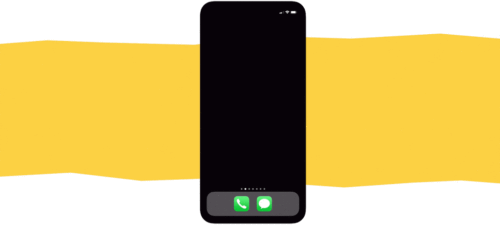
I’ve had a distraction-free iPhone for six years now. And there have been costs. I lost my reputation for instant email response and immediate task turnaround.
Without the tug of my phone, I drifted off of Facebook and lost touch with some friends.
But there were rewards as well. Without infinite friends, I paid better attention to moments with my wife and kids. This, for me, was and is the most important reason to redesign my relationship with my phone.
It’s also very personal and specific to me, so I’m not going to linger on it.
It’s the second benefit I want to focus on — a very unexpected benefit.
Distraction-Free Is a Competitive Advantage
I’ll be honest with you. As great as it is for me, I don’t think you’re likely to try a distraction-free phone. And I get it. It sounds nuts to remove functionality from our phones, especially when we’ve all grown accustomed to nonstop connectivity over the last decade.
Still, I really want you to try it. So at the risk of getting preachy (well, what the hell, I probably blew past that a while ago) I’ll give you another reason to delete those apps from your phone.
Here’s the thing: When I stopped instantly reacting to everyone else’s priorities, I got better at making time for the projects I believed were most important—even if they weren’t urgent or nobody was asking for them.
I invested effort in documenting and promoting my design sprint process. And, after a lifetime of putting it off till “someday,” I finally started writing, eventually publishing two books.
How much of my improved output can I attribute to the distraction-free iPhone? A lot, I think. Doing big projects takes many sessions of focused work, added up over time. It’s like building a pyramid, and every work session is like cutting a block of stone and stacking it on the foundation.
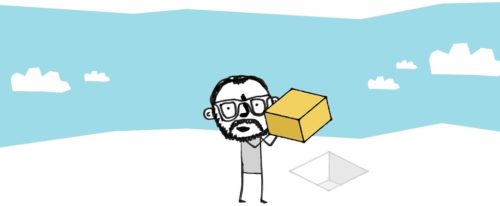
Suppose I’m in a pyramid-building race with Bizarro Jake, who still has all the apps on his phone. He’s faster on email and has more Instagram followers, but it’s harder for him to focus.

Bizarro Jake is reacting to small stuff. Every time I eke out one or two extra blocks of focus, I get ahead. Every time he stops to check his phone, he shatters a block.
Research says it takes an average of 23 minutes to get back on task after an interruption — that number sounds crazy, but experience tells me it’s about right.
Bizarro Jake can’t put his own priorities first. But if I can focus, I can make progress on blog posts, illustrations, slide decks, and book chapters — projects that matter to me, even if nobody is asking for them.

This was the biggest difference in my work the last six years. I didn’t suddenly acquire willpower or self-control. I’m far from perfect. But without those apps in my pocket, I have a competitive advantage over my prior self.
Don’t Wait for Big Tech to Solve It For You
Hold on. Apple, Google, and Facebook are all rolling out tools to help us control our screen time. Is the problem already fixed?
I don’t think so. In my expert opinion as an iPhone addict, these new app timers are too hard to set up and too easy to dismiss, with default time caps that are much too long.
So what if Bizarro Jake cuts his YouTube time from two hours to one, or gets a reminder after 15 minutes on Instagram?
He’ll still hear the Ring calling. He’ll keep shattering the blocks of his pyramid. Turning down the firehose a few percent does not create freedom.
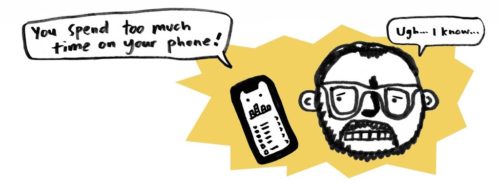
If your phone gets in the way of whoever and whatever is important to you, don’t accept the compromise. Take matters into your own hands and design the phone you want.
Try a Two-Hour Experiment
You don’t have to make a permanent commitment to a distraction-free phone. Just experiment to see how it feels.
I recommend you go all the way and delete every distracting app, so you can feel the simplicity and clarity that comes from having absolutely nothing pulling you towards your phone.
Remember—it is very easy to reinstall all of these apps.
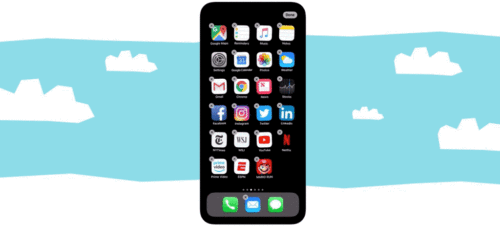
Here’s what to do:
1. Decide WHY you want more attention.
My reason was paying better attention to my kids. Your reason might be giving more attention to people you care about, or making time for a work project or hobby.
Whatever you choose, it helps to have a reason because deleting apps is tough!
2. Set expectations.
Tell colleagues and friends, “I’m slow to respond because I’m focusing on something important. Call me if it’s urgent.”
3. Delete social media apps.
Keep in mind that you can always check in on another device (laptop, tablet, etc) or reinstall if you really have to.
4. Delete news apps.
It feels like “the responsible thing” to stay up to date on the nonstop breaking news — but we can and should step back.
5. Delete streaming video apps and games.
You can still watch a show or play a game, just add the barrier of installing the app each time (or do it on another device instead).
6. Remove web browsers.
You’ll have to dig for the option in your phone settings. On the iPhone, go into Settings → Screen Time → Content & Privacy Restrictions → Allowed Apps and switch off Safari.
7. Delete email and other “productivity” messaging apps.
This can be the hardest step (it was for me!) because these apps are tied to work. Yes, some percentage of people — on-call doctors, technicians, and so forth — actually must respond immediately.
But the rest of us should ask: Can it wait till tomorrow? Read about this study which shows you’ll be more efficient (and less stressed!) if you check messages less often.
Give It Two Hours and See How You Feel
Two hours is enough to experience the feeling of freedom. But if you like, try it overnight, or for one day, or even a whole week.
However long your experiment is, spend some time on the focal point you chose above (#1) and notice the quality of your attention. I think you’ll find it easier to focus, but I’m me and you’re you.
Or, if all of this sounds too intense, start small and just delete the one or two apps that bother you the most, and see how long you can go.
Whatever you try, for however long you try it, a distraction-free phone is not a monastic vow. If you don’t like it, go back.
If you really need an app to do something, just reinstall it — it only takes a few moments, and you can always delete it again when you’re done (or keep it if it doesn’t bother you).
I’ve certainly reinstalled these apps for one reason or another. Each time, I enjoy the app for a few minutes, then feel a wave of relief when I delete it and get my attention back.

That’s what really matters in the end: being the boss of my attention. Over the last six years, I’ve been able to pay attention to more moments with my wife and kids. More often, I feel like I’m being the dad I want to be.
Again, in no way do I have it all figured out. It’s a distracting world out there, and every moment is a battle to focus on what matters. Still, without infinity in my pocket, the odds are in my favor.
You may have more self-control than I do, but if you ever feel bossed around by your phone, don’t just accept a compromise from the settings panel. Delete those apps and take control.
DISCLAIMER – Please we are not in any way, claiming ownership for this article. . This article was originally posted on Medium.com by Jake Knapp. I only felt it was good and inspiring, so i republished here for my readers. Nothing was added or removed from the original piece..
SOURCE – Medium

